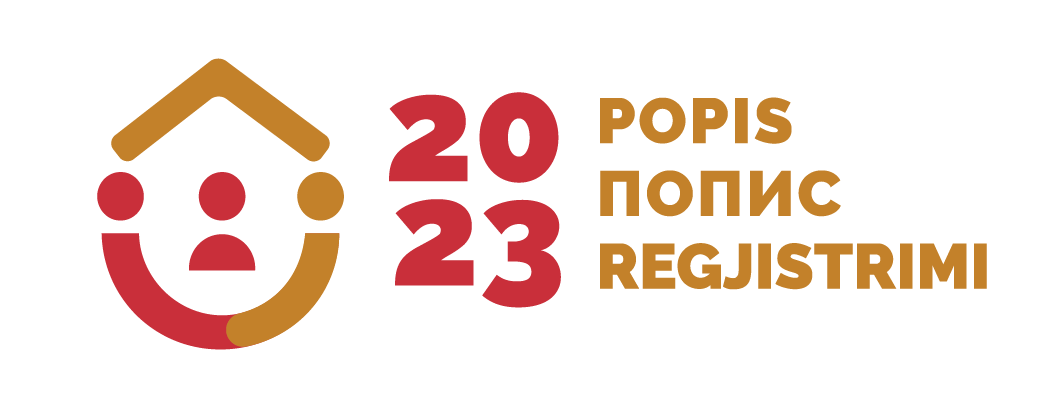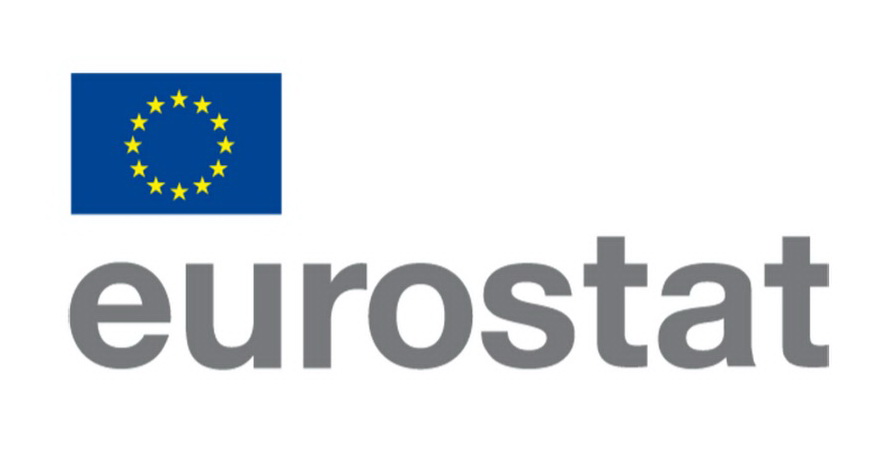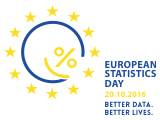| Category: |
Economic statistics |
| Area: |
Prices |
| Survey / data collection: |
Consumer Price Index (CPI) |
Note: For any question on metadata, please contact MONSTAT metadata support.
| 1. Contact Vrh |
| 1.1. Contact organization: |
Statistical Office of Montenegro - MONSTAT |
| 1.2. Contact organization unit: |
Department for price statistics and foreign trade |
| 1.2. Contact organization unit: |
IV Proleterske 2, 81000 Podgorica, Montenegro |
| 2. Metadata update Top |
| 2.1. Metadata last certified: | 18 December 2023 |
| 2.2. Metadata last posted: | 29 December 2023 |
| 2.3. Metadata last update: | 18 December 2023 |
| 3. Statistical presentation Top |
| 3.1. Data description: | Consumer Price Index (CPI) is defined as the measure of the average change of prices of a fixed basket of goods and services, which is purchased by households and which aims to satisfy the households' needs. CPI measures a change over time in the prices, using consumption structure of base period for both periods (Laspeyres-type price index). The aim of CPI is to calculate inflation, as one of the most important macroeconomic indicators. In addition to measurement of inflation, it can be used for the purpose of harmonizing earnings, pensions, social contributions, and it is used as a deflator in National Accounts. |
| 3.2. Classification system: | COICOP 1999; ECOICOP |
| 3.3. Sector coverage: | CPI covers the whole household sector, more precisely the goods and services that are acquired by households (national concept). |
3.4. Statistical concepts and
definitions: | The Consumer Price Index (CPI) is an indicator of the average change in prices for all products and services used by households for consumption purposes. The Consumer Price Index serves as the official measure of inflation in Montenegro.
Elementary aggregates represent products at the lowest level of aggregation i.e. products in all sales facilities in one geographical location.
The monthly inflation rate (m/m-1) measures the change in the average prices of the current month compared to the average prices in the previous month.
The annual inflation rate (m/m-12) measures the change in the average prices of the current month compared to the average prices in the same month of the previous year.
The cumulative index (rate of change) measures the change in the average prices of the current month compared to the average prices in December of the previous year.
The base index (rate of change) measures the average price change in the current month compared to the average of the base year.
The average annual index (rate of change) measures changes in average prices from the beginning of the year to the current month compared to the same period of the previous year (e.g. Jan-May 17/Jan-May 16).
The weights used for calculation of the consumer price index represent a relative share of the selected goods and services in the total household?s consumption, in domestic territory. More precisely, they represent the "importance" of a particular product group in total household?s consumption in a specific reference period. |
| 3.5. Statistical unit: | Each published index or rate of change refers to the final household monetary consumption within the economic territory of Montenegro. Reporting units covers all types of retail shops (stores of all types and sizes, green markets, craft workshops, public service companies, catering, sports and cultural-educational facilities and the like) which have the highest turnover. The observation units are retail prices of final consumption products and services, which have a significant share in the total consumption of the average consumer. These products and services make the "basket" of goods and services, which includes mainly products and services, whose share in total consumption of the population exceeds 0.1%. |
| 3.6. Statistical population: | Consumption of all private households permanently residing in Montenegro is covered. Neither consumption of the collective households, nor non-resident consumption is covered. |
| 3.7. Reference area: | Territory of Montenegro. |
| 3.8. Time coverage: | CPI data are available from January 2009. |
| 3.9. Base period: | The index reference period is 2015=100. |
| 4. Unit of measure Top |
| The following units are used:
- Index (actually unitless, i.e. it is the ratio of the price of the basket in a given year to the price in the base year multiplied by 100);
- Percentage change on the same period of the previous year (rates);
- Percentage change on the previous period (rates);
- Percentage share of the total (weights). |
| 6. Institutional mandate Top |
6.1. Legal acts and other
agreements: | The Law on Official Statistics and Official Statistical System (Official Gazette of Montenegro No 18/12 and 47/19) defines provisions for collection, processing, and dissemination of data.
The Law provides to the Statistical Office legal powers to collect and access the data necessary for the implementation of Programme and Annual Plan.
The Law gives a priority to the use of administrative data and right of access to individual data that are a result of survey of other official statistical producers.
As an annex to legal provisions, Statistical Office has signed several memoranda on cooperation with administrative data providers. |
| 6.2. Data sharing: | Signed agreement on cooperation with the official statistical producers:
1. Ministry of Finance
2. Central Bank of Montenegro
3. Trilateral agreement (MONSTAT, Ministry of Finance, and Central Bank of Montenegro)
International institutions:
1. EUROSTAT
2. UN organizations
3. IMF
4. World Bank |
| 7. Confidentiality Top |
| 7.1. Confidentiality - policy: | Articles 53-60 of the Law on Official Statistics and Official Statistical System (Official Gazette of Montenegro No 18/12 and 47/19) provide a framework for protection, use, and transmission of confidential data. Statistical office has produced two comprehensive rulebooks that cover the procedures for individual data protection as well as keeping individual records. With purpose of the meeting legal framework on functioning of security system and statistical confidentiality there was adopted the Rulebook on Keeping Statistical Data by which Manner, Time, Technical Conditions and Organization of Statistical Data Storage to Prevent Their Destroying, Misappropriation, and Unauthorized Use is Regulated as well as the Rulebook on Contents and Manner of Keeping Records on Users of Individual Statistical Data by which contents and manner of keeping records on users of individual statistical data is regular.
Pursuant to the Article 59, an access to the confidential data is limited to persons performing duties and tasks of official statistical producer and up to the stage the data are necessary for official statistical production. Persons that performs duties and tasks within official statistical producers must sign the statement on respecting the principle of confidentiality.
Law on Official Statistics and Official Statistical System is aligned with the Regulation No 223/2009 and the Regulation (EU) 2015/759 from 29 April 2015 that also regulate confidentiality provisions.
The Government of Montenegro adopted the Statement on Commitment of Confidence in Official Statistics (Commitment of Confidence). |
7.2. Confidentiality - data
treatment: | Statistical Office staff members sign confidentiality statement on respecting data confidentiality, and for any deliberate violation of statistical data confidentiality, important legal measures are envisaged.
Article 54 of the Law on Official Statistics and Official Statistical System of Montenegro (Official Gazette of the Republic of Montenegro No 18/12) regulates that data collected, processed, and stored for purpose of official statistics shall be considered confidential if they allow reporting units to be identified, either directly or indirectly, thereby disclosing individual information.
The reporting unit directly identified means the identification of a reporting unit from its name or address, or from assigned identification number.
Indirect identification means the identification of a reporting unit by the deduction, having into account all measures to identify a reporting unit. Data for the use of which reporting units gave explicit approval shall not be considered confidential. |
| 8. Release policy Top |
| 8.1. Release calendar: | The Law on Official Statistics and Official Statistical System (Official Gazette of Montenegro No 18/12) stipulates that official statistical producers prepare, update, and publish Statistical Release Calendar. It is published on the website of Statistical Office not later than 20 December for the next year, for all official statistical producers that includes date of releasing statistical data. Any change in date of releasing in the Calendar is published in advance in accordance with the Procedure on Unplanned Revisions. |
| 8.2. Release calendar - access: | http://www.monstat.org/eng/page.php?id=12&pageid=12 |
| 8.3. User access: | General aim of official statistical producer is to meet the needs of users, and to make an access to statistical data to users in an understandable manner, simultaneously and under the same conditions. Statistical Office is obliged to produce and disseminate official statistics in objective, transparent and professional manner, so that all users are equally treated. |
| 10. Accessibility and clarity Top |
| 10.1. News release: | Data are available in form of monthly releases published at the official website:
http://www.monstat.org/eng/page.php?id=410&pageid=26 |
| 10.2. Publications: | Statistical Office publishes the following regular publications: 1. Statistical Yearbook, 2. Montenegro in figures, 3. Monthly statistical review. In addition to the above regular ones, Statistical Office publishes also additionally publications. Some of the most important additional publications are as it follows: 1. Women and Men in Montenegro, 2. The most often used statistical data All publication published by Statistical Office are available at the following link: http://monstat.org/eng/publikacije.php |
| 10.3. Online database: | Monthly releases of Consumer Price Index (with more detailed data) are available on MONSTAT website, within section Prices, from January 2009, when the cost of living index and the retail price index are replaced by the Consumer Price Index, which is the official measure of inflation in Montenegro. In the file named Data, in the form of excel tables (CPI, COLI, RPI), data are also available for the cost of living index and the retail price index, for the period 2001-2008.
http://www.monstat.org/eng/page.php?id=26&pageid=26 |
| 10.4. Micro-data access: | The Law on Official Statistics and Official Statistical System (Official Gazette of Montenegro No 18/12) regulates rules under which external users can obtain an access to individual data for needs of research. Article 58 defines types of scientific and research organizations that can obtain such data. Providing individual data without identifier is possible only upon a written request of scientific and research institutions, with purpose of performing scientific and research activities as well as international statistical organizations and statistical producers from other countries.
Research entity signs the agreement with Statistical Office, and it signs the statement on respecting the confidentiality principle.
Official statistical producers keeps a separate records on users and purpose of using the statistical data given to these users. |
| 10.5. Other: | United Nations MBS Database |
10.6. Documentation on methodology:
domain: | Methodology of statistical survey and instructions for price monitoring are available at the website of MONSTAT, using the following link: http://www.monstat.org/cg/page.php?id=26&pageid=26 |
| 10.7. Quality documentation: | The Law on Official Statistics and the Official Statistical System ("Official Gazette of Montenegro" No. 18/12 and 47/19) defines the commitment to quality, which ensures that producers of official statistics in Montenegro work and cooperate in accordance with international principles of quality of the statistical system.
In accordance with the ESS Quality Declaration, Article 338 of the Treaty on the Functioning of the EU, Regulations 759/2015 and 223/2009 and the European Statistics Code of Practice, the following documents are adopted:
1. Quality Strategy of the Statistical Office
2. Guide for the implementation of the Quality Strategy in the Statistical Office;
3. Implementation plan |
| 11. Quality management Top |
| 11.1. Quality assurance: | Statistical Office has chosen the implementation of elements of TQM (Total Quality Management) model that foster development and improvement of functioning of:
- Institution,
- Official statistical result production, and
- Individual.
Within middle-term deadline, Statistical Office has chosen the TQM implementation through the following objectives:
1. Strong commitment to users and other interested parties,
2. Quality statistical processes and products,
3. Professional orientation of staff members,
4. Constant improvements,
5. Reduction of overburden of reporting units.
Collected price data are checked and edited in several steps. First, the price collectors' notes and signal indications regarding model changes, missing prices etc. are reviewed. Checks are made for missing or duplicate price records. Then, lists for editing are iteratively produced and reviewed to check for unexpectedly deviating prices, etc. This is to ensure that such data are not due to mistakes in processing, and the data are edited as and when needed. The price collectors' judgmental valuations of quality changes are also reviewed in this process. There is no automatic rejection, all suspicious data are re-checked by collectors.The price collectors or outlets are contacted for further information on specific cases when necessary. Centrally collected prices are entered into the system by central office staff. Department for Price Statistics do validation, calculation and checking of the preliminary indices, comparing with the data from the previous periods. After detailed control and data analysis, the final data are prepared for publication and submitted to the supervisors for final verification. |
| 11.2. Quality assesment: | The quality of the CPI is assessed to be very high considering that its concepts and methodology have been developed according to the international standards and using the best European consumer price statistics practice. CPIs are considered to be sufficiently accurate for all practical purposes they are put into.
Further work is ongoing to improve the quality and in particular comparability of the index. |
| 12. Relevance Top |
| 12.1. User needs: | International users:
- Eurostat,
- World Bank,
- UN organizations,
- International Monetary Fund
National users:
- Ministries and other public administration bodies,
- Local government, and
- Other local government bodies.
- Central bank,
- Non-governmental organizations,
- Students,
- Researchers,
- Media. |
| 12.2. User satisfaction: | The Statistical Office has adopted the Quality Management Strategy, the Guidebook to the Implementation of the Quality Management Strategy, as well as the Plan for the Implementation of the Quality Policy.
In order to measure the degree to which fulfills obligations towards users and within the new quality policy, the Statistical Office conducted User satisfaction survey.
The results of the survey are available on the Statistical Office website, link: http://monstat.org/uploads/files/2.%20Izvjestaj%20o%20zadovoljstvu%20korisnika%20ENG%20(Autosaved).pdf |
| 12.3. Completeness: | All national requirements are fullfilled. |
| 13. Accuracy and reliability Top |
| 13.1. Overall accuracy: | The accuracy of CPI is generally considered to be high. The accuracy of source data is monitored by assessing the methodological soundness of price and weight sources and the adherence to the methodological recommendations.
There is a variety of data sources both for weights (National Account data, Household Budget Survey data, etc.) and prices (visits to local retailers and service providers and central collection via mail, telephone, e-mail and the Internet are used). The type of survey and the price collection methods ensure sufficient coverage and timeliness. The outlets from which prices are collected, are chosen to represent the existing trade and services network and they are based usually on three main criteria: turnover, representativeness and coverage of availability of goods and services included in CPI's basket. Prices are collected in outlets, craftsmen, supermarkets, markets, etc., in 5 municipalities in the country
(the biggest market centers), some of them also via the internet and by phone. They reflect the price situation for the whole country. Weights are based on the data from HBS on the structure of household final consumption expenditure.
Private households are included irrespective of their income. The national concept is in force. |
| 13.2. Sampling error: | The survey is not based on a random sample, so we cannot use the "classic" approaches to assess the sampling error.
The methodology for calculating the precision of consumer price indices is not yet completely developed because of the complexity of sample design. MONSTAT put efforts to reduce the sampling error by using the sample of consumer prices that is as large as possible, given resource constraints, models that optimize the allocation of resources by indicating the number of prices that should be observed in each municipality and each item category, in order to minimize the variance of the all items index. |
| 13.3. Non-sampling error: | The sample defined for collecting consumer prices is not random, but chosen with the purpose of satisfying specific objectives. The basic principle of sample selection has been adopted with the aim of ensuring representativeness of consumer behavior in terms of the coverage of the most frequently purchased products, the most frequently visited outlets and the best-selling products. |
| 14. Timeliness and punctuality Top |
| 14.1. Timeliness: | Data are published according to the Statistical Release Calendar in form of regular monthly release. |
| 14.2. Punctuality: | CPI data are published in accordance with the Statistical Release Calendar for 2022. |
| 15. Coherence and Comparability Top |
15.1. Comparability -
geographical: | Despite the differences between country methodologies, the CPI is also an internationally recognized inflation measure, but is largely used for national purposes.
In the case of the Montenegrin CPI, the most important requirements of the European Commission regulations which are in force in the case of the HICP, have been largely implemented. |
| 15.2. Comparability over time: | CPI data - annual and monthly indices/rates since 2009 are available at the MONSTAT website. From 2001 until 2008 we have available data for RPI and COLI. These two indices (RPI, COLI) are replaced by CPI from January 2009, which represent official measure of inflation in Montenegro. CPI data are comparable from 2009 onwards, while for the previous years CPI is comparable with RPI/COLI only on the total level. |
15.3. Coherence - cross
domain: | Differences between the HICP and national CPI reflect in the following: population coverage is different (CPI covers the consumption expenditure of residents and private households within the economic territory of the country, while the HICP covers the consumption expenditure for residents and non-residents, as well as collective households within the economic territory of country). The data sources for the calculation of weights are different (CPI uses Household Budget Survey as the main data source, while HICP uses the data from National Accounts). |
| 15.4. Coherence - internal: | CPIs are internally coherent. Higher level aggregations are derived from detailed indices according to well-defined procedures. |
| 17. Data revision Top |
| 17.1. Data revision - policy: | Statistical Office has adopted the revision policy and it is available on the website: http://www.monstat.org/eng/page.php?id=1411&pageid=1411 |
| 17.2. Data revision - practice: | The published data are considered to be final, except in case of methodological changes and introduction of new classifications, due to which they are subject to revision. |
| 18. Statistical processing Top |
| 18.1. Source data: | The selection of weights:
Weights are structure of household consumption obtained on the basis of HBS data.
Selection of shops:
Criteria for selection of number and type of shops in one town are:
-Type of product or service for which prices are collected
-Number of population
-Turnover achieved
-Price balance of the same product in different shops
-Continuous supply of goods in shop
-Consumer's habit
-Location
Number of population and product type are the main criteria for selection of number of shops by towns. Due to permanent presence in the field and facing real situation, price collectors, in cooperation with the Price Statistics Department, will take a final decision on selection of collecting places.
Selection of shops for price collection is updated every year.
Selection of products:
The list of products for which the prices are collected is uniform for entire Montenegro. A final list for price collection is defined by Statistical Office, i.e. Price Statistics Department, after the consultation with price collectors, up to the end of November at the latest.
Price collector selects a product that match to the product description from the product list. If in a shop there are several different products that correspond to the appropriate description, it is selected one that is sold the most in longer time period. Due to this, it is very important that when selecting a product, a sale person is consulted. When a product is selected for which the price will be collected, it is unchanged during an entire year. |
18.2. Frequency of data
collection: | For the purposes of calculation of the consumer price index, prices are collected once a month in the period from the 3rd to 25th of the month, except for the prices of fuel which are collected on a daily basis. |
| 18.3. Data collection: | Price data are collected on a monthly basis for selected goods and services in 5 municipalities: Podgorica, Niksic, Bijelo Polje, Bar and Budva, which represent the biggest market centers. Some prices are collected centrally by Price Department. Depending on the type of goods or services, the data are collected by either phone interview, questionnaire or through the Internet. |
| 18.6. Adjustment: | As CPI aims at measuring "pure" price changes, it should be unaffected by changes in the quality of products. Prices therefore need to be adjusted for changes in the quality of goods and services, to estimate what part of the total price change was due to a change in the quality of the product and what part is a genuine price change.
The largest number of adjustments for quality change are cases where there is a small change in the product (e.g. packaging and design). In these cases all price changes are counted as "pure" price changes.
If a new product is significantly different from the old product the whole price change is attributed to a change in product quality.
Adjustments for quality differences: In order to deal with quality changes, a case by case approach is adopted. There are three main types of quality adjustment procedure used in our CPI/HICP: direct price comparison, explicit methods and implicit methods. Explicit methods that have been used are: option pricing, package size adjustment, judgmental and supported judgmental quality adjustment. Main implicit method is bridge overlap. |







